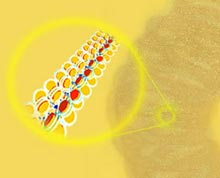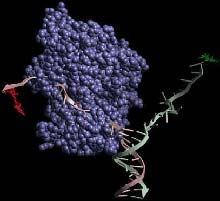Articles and reports from the Life Sciences and chemistry area deal with applied and basic research into modern biology, chemistry and human medicine.
Valuable information can be found on a range of life sciences fields including bacteriology, biochemistry, bionics, bioinformatics, biophysics, biotechnology, genetics, geobotany, human biology, marine biology, microbiology, molecular biology, cellular biology, zoology, bioinorganic chemistry, microchemistry and environmental chemistry.

Genomes of multicellular organisms are one of the greatest mysteries of biology. The more is discovered about them, the more questions are to be answered. One of such questions is connected with the size of a genome. As is known since the middle of the 20th century, the level of organization of an organism does not depend on the genome size, i.e., on the amount of DNA in the nucleus of a cell. Sometimes, a primitive organism contains much more DNA than a mammal. For example, the genome of certain amo

A research team at two Midwest universities has developed a new way to genetically alter cells in living mice, offering new possibilities in the war against cancer and other diseases.
Using a modified virus as a Trojan horse, a team led by Purdue University’s David Sanders has found a promising system to deliver genes to diseased liver and brain cells. By placing helpful genetic material within the outer protein shell of Ross River Virus (RRV), Sanders’ team was able to alter the

A team led by Terumi Kohwi-Shigematsu of Lawrence Berkeley National Laboratory’s Life Sciences Division has demonstrated that SATB1, a protein crucial to the development of the immune system, works by forming a network in the cell nucleus, attaching chromatin to the network structure at specific sites, and orchestrating remodeling of the chromatin over long distances to regulate gene expression.
“SATB1 determines when and how the genes are read — when they are activated and when they are

Using an optical fluorescence microscope to monitor enzyme activity, researchers at three universities have solved a long-running mystery. It takes at least two proteins, working in an unstable tandem, to unzip two strands of DNA.
Their newly designed approach, which focuses on the activity of single molecules, also showed — for the first time — that if one protein falls away, the process stops. Unless another climbs aboard, DNA reverts to its zipped state.
The technique, which o

Ribosome Recycling Factor Mimics Shape, But Not The Functions of Transfer RNA
RRF Protein Offers Potential Target for New Antibiotics
The fact that ribosome recycling factor (RRF) looks a lot like transfer RNA (tRNA) has not been lost on scientists. After all, both molecules are an important part of a bacteria’s ability to create new proteins. Researchers at the University of Pennsylvania School of Medicine and the University of Southern California, Santa Cruz, however, hav

When animals metabolize food or when plants photosynthesize it, electrons are moved across cell membranes. The “extension cords” of this bioelectrical circuit are mostly iron-containing proteins called cytochromes.
Chemist Kenneth S. Suslick and colleagues at the University of Illinois at Urbana-Champaign have created synthetic cytochromes by making a small cyclic peptide that binds to the iron millions of times more strongly than without the peptide. The scientists report their discovery i